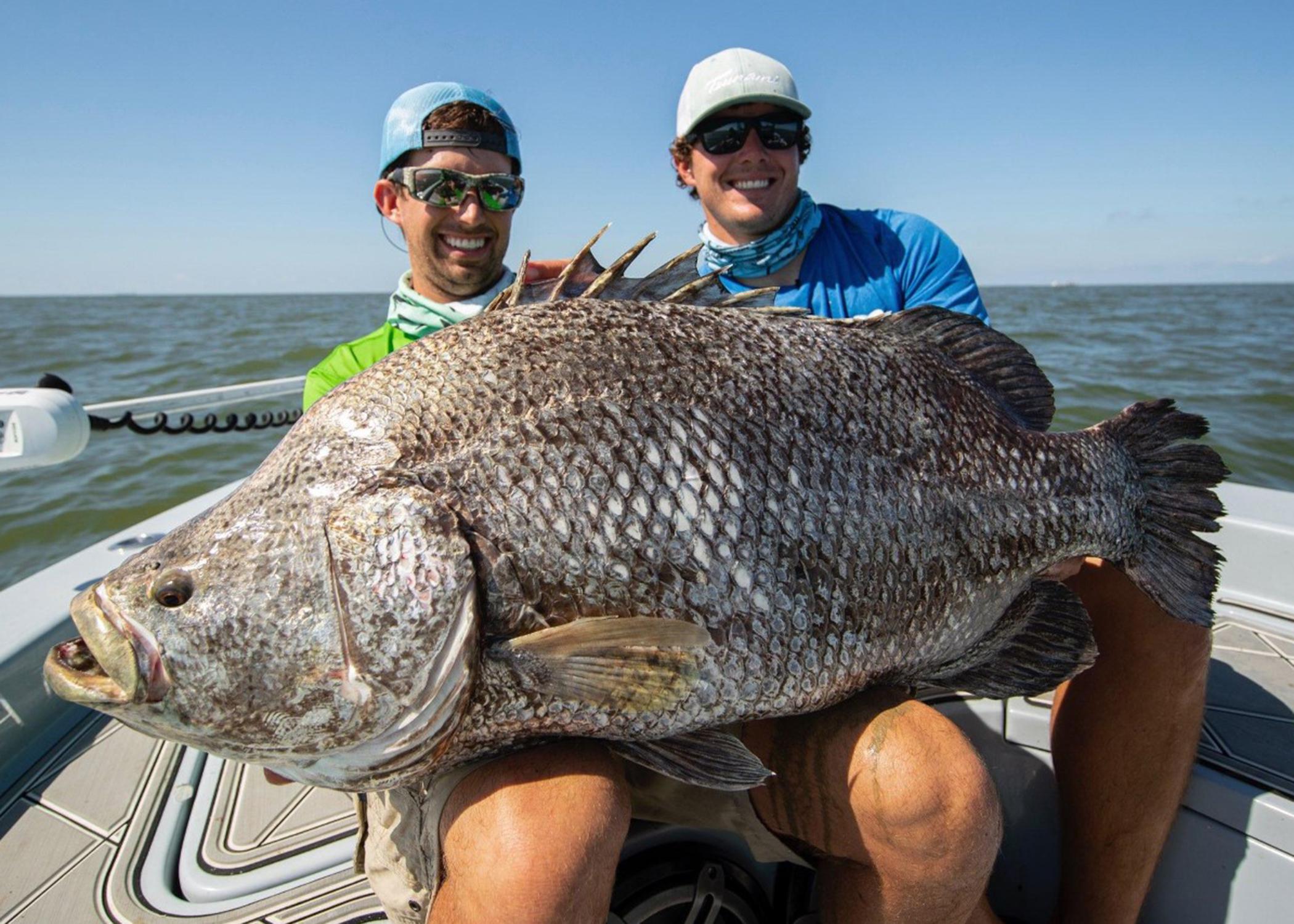Information Possibly Outdated
The information presented on this page was originally released on March 18, 2020. It may not be outdated, but please search our site for more current information. If you plan to quote or reference this information in a publication, please check with the Extension specialist or author before proceeding.
MSU biologists age large tripletail fish
BILOXI, Miss.-- At Mississippi State University’s Coastal Research and Extension Center, we recently aged one of the largest tripletail fish ever caught.
Josh Jorgensen, avid angler and host of the online fishing show “BlacktipH,” hooked the colossal, 37-inch, 39.3-pound fish -- the fourth largest tripletail on record worldwide -- off Venice, Louisiana, this past October. Conveniently, the MSU Marine Fisheries Ecology Program was simultaneously concluding a tripletail age and growth study, the first from the Gulf of Mexico since the late 1990s.
Over the past several decades, tripletails have become increasingly popular among Atlantic and Gulf coast anglers. This trend is attributed, in part, to progressively stricter regulations on historically depleted offshore species, such as red snapper, which have prompted anglers to seek alternatives. The tripletail is an excellent choice: It’s easy to sight-fish, it puts up a thrilling fight once hooked and -- best of all -- it’s quite delicious.
Previously underutilized fishes, like tripletails, can provide considerable benefits to anglers. However, sudden intensification of fishing pressure can spell trouble for the targeted species. In such instances, fisheries biologists and managers must gather accurate, up-to-date data to ensure increases in popularity don’t result in population declines.
Age data enable biologists to estimate the proportions of young versus old fish and the lifespan of the fish in the population. Moreover, the age data can be combined with length data in mathematical models to evaluate growth rates, maximum sizes and survival/mortality rates.
Fisheries managers use the results from these analyses to help ensure the sustainability of fished species, since short-lived species can generally be harvested more heavily compared to long-lived species.
By last fall, we had aged 229 tripletails. Most of these fish were examined at fishing tournaments and ranged in size from 8 to 30 inches and weighed between 1 and 30 pounds. Remarkably, ages ranged from 0 to 4 years, with most aged 1 or 2 years. The resulting growth models indicated very rapid growth during the first year of life.
We were ready to call our study complete, but when we learned about Jorgensen’s incredible catch, we couldn’t help but reach out. We excitedly explained that the Louisiana fish would fill critical data gaps for the species. It would be the largest tripletail ever aged and potentially the oldest, too. Luckily, Jorgensen had mailed the fish home to Florida for preservation purposes, and he enthusiastically agreed to let us age it.
The next phase was a true team effort. Jorgensen transported the fish to trophy mount expert Zach Schwartz, who determined the sex of the fish (female) and is now working to articulate the skeleton into a bone mount.
Next, taxidermist Adam Emerick carefully extracted the otoliths (a pair of ear bones) from the fish’s skull. Otoliths are composed of calcium carbonate, which accretes throughout a fish’s life and leaves annual rings inside the structure -- like a tree trunk -- allowing biologists to age the fish. Emerick mailed the otoliths to Biloxi, where we used a special saw to obtain three cross sections from the center of one of the otoliths.
Life is full of surprises for those who study age and growth of fish. Many of the Gulf’s most popular fish are relatively long lived. For example, both red snappers and red drums can live more than 50 years. As you can imagine, the largest fish are generally the oldest.
So, when we examined the tripletail cross-sections under the microscope, we were astonished; the otolith contained only five rings. The Louisiana giant was likely only 5 years old, despite weighing almost 40 pounds.
Interestingly, previous Gulf of Mexico tripletail studies reported a similar maximum age of 4 years for specimens weighing only 20 pounds. Thanks to Jorgensen’s nearly record-size fish, we’ve learned that even the largest tripletails in the Gulf of Mexico live relatively short lives.

Editor’s Note: Extension Outdoors is a column authored by several different experts in the Mississippi State University Extension Service.





